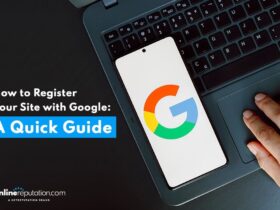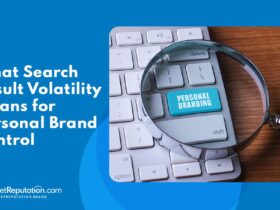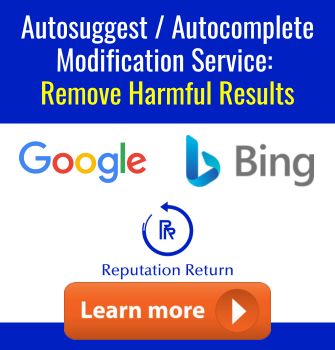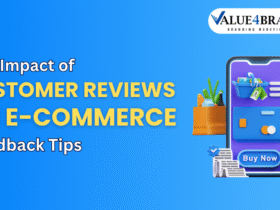In today’s digital age, your online presence shapes how consumers perceive your brand. A single negative review or social media post can spread rapidly, impacting customer trust and loyalty. With 88% of shoppers preferring businesses that actively engage with feedback, maintaining a positive brand image isn’t optional—it’s essential for sustainable growth.

Monitoring platforms like review sites and social channels requires constant attention. Without centralized management tools, businesses risk missing critical feedback or trending issues. For example, companies like Airbnb use real-time data insights to address concerns swiftly, turning potential crises into opportunities to strengthen relationships.
We understand the challenges of balancing daily operations with online reputation oversight. That’s why proactive strategies—like tracking mentions and analyzing customer reviews—help safeguard your brand’s values. A delayed response to negative content can harm search visibility and deter potential clients.
At ReputationReturn.com, we combine advanced monitoring technology with personalized service to protect your digital footprint. Our team identifies emerging trends and crafts tailored responses that align with your business goals. Whether addressing feedback on Yelp or managing social media sentiment, we ensure your brand remains resilient in a competitive landscape.
Key Takeaways
- Consumer trust directly links to how businesses respond to online feedback.
- Centralized tools streamline monitoring across review sites and social platforms.
- Proactive strategies prevent minor issues from escalating into brand crises.
- Positive reviews and engagement improve SEO rankings and visibility.
- Partnering with experts ensures consistent brand alignment and rapid response times.
Ready to take control? Contact us today for a free consultation to strengthen your digital safety net.
Introduction: The Importance of Online Reputation Monitoring
When 77% of shoppers check reviews before buying, your digital footprint becomes a powerful business asset. Every star rating and social media comment influences buying decisions. Quick responses to feedback build trust—studies show companies addressing concerns within seven days see 34% higher customer retention.
Your Brand is Your Currency
A cohesive personal brand acts as a trust accelerator. Consider how influencers grow loyal followings by aligning their values with audience expectations. For businesses, this means ensuring every interaction—from website copy to support tickets—reflects core principles. One restaurant chain increased sales by 18% after revamping its response strategy to negative Yelp reviews.
Perception Shapes Profit Margins
Research reveals a one-star rating difference impacts revenue by 5-9%. Here’s why:
- Positive Google reviews boost local search visibility by 15%
- 53% of customers expect brands to respond to social media complaints within an hour
- Businesses with 4+ stars attract 31% more website clicks
We help clients turn feedback into growth catalysts. Our monitoring systems track 20+ platforms, flagging urgent issues while highlighting improvement opportunities. Let’s discuss your free consultation to build a proactive digital defense strategy.
Understanding the Fundamentals of Reputation Management
Did you know 63% of a company’s market value ties directly to its public perception? Building trust requires more than polished marketing—it demands strategic alignment between your brand image and operational integrity. Let’s break down core concepts shaping modern digital credibility.
Defining Reputation Management and Brand Image
Reputation management involves systematically tracking feedback across review sites, forums, and social media to shape stakeholder perceptions. Unlike generic review management, it addresses deeper narratives influencing customer experience. For instance, Starbucks revamped its employee training after analyzing recurring complaints about service speed—boosting satisfaction scores by 22% in six months.
Key Differences Between Brand Reputation and Business Reputation
Your brand reflects emotional connections (logos, values), while business reputation covers operational reliability (delivery times, ethics). Consider Walmart’s 2015 decision to stop selling Confederate flag merchandise—a move protecting its brand values while addressing broader societal concerns. Key contrasts:
- Brand focus: Visual identity, audience engagement
- Business focus: Supply chains, compliance, partnerships
We help clients harmonize these elements through data-driven strategies. Whether refining response protocols or auditing third-party partnerships, our approach ensures alignment with your core mission. Let’s discuss how to transform scattered feedback into actionable insights during your free consultation.
Building and Monitoring Your Personal Brand Online
Your personal brand acts as a 24/7 ambassador across digital channels. Cohesive visuals and messaging create instant recognition—like how Apple’s minimalist design language builds loyalty. Let’s explore practical steps to maintain alignment between your brand identity and audience expectations.

Maintaining Consistent Imagery and Messaging
A unified aesthetic builds trust. For example, a software developer increased client retention by 40% after standardizing color schemes and support tone across LinkedIn and GitHub. Follow these guidelines:
- Update logos and bios quarterly to reflect evolving values
- Use tools like Canva to enforce style guides
- Align blog content with mission statements
Conducting Regular Audits of Your Online Presence
Quarterly checks prevent disjointed messaging. One e-commerce brand found mismatched product descriptions on 3 platforms during an audit—fixing them boosted conversions by 12%.
| Audit Focus | Tools | Frequency |
|---|---|---|
| Website Content | Screaming Frog | Monthly |
| Social Media | Hootsuite | Weekly |
| Review Sites | Google Alerts | Daily |
Partnering with experts streamlines this process. Our team at ReputationReturn.com uses proprietary software to scan 50+ channels for inconsistencies. During your free consultation, we’ll create a tailored plan to strengthen your digital identity.
Navigating Customer Reviews and Feedback
Customer feedback shapes purchasing decisions more than ever—90% of shoppers read reviews before visiting a business. Timely, thoughtful responses build credibility: 79% expect replies within 24 hours. At ReputationReturn.com, we turn critiques into relationship-building opportunities through structured review management systems.
Strategies for Responding to Negative Reviews
Addressing criticism calmly prevents escalation. Start by validating concerns—”We appreciate your feedback” disarms tension. One restaurant chain reduced negative Yelp ratings by 33% using this approach. Always reference specific details from the customer’s experience to show genuine attention.
Automation tools like Text Request streamline tracking across platforms. Key tactics:
- Personalize responses using the reviewer’s name
- Offer solutions publicly, then move complex issues offline
- Analyze patterns to improve customer experience
68% of buyers value empathy in brand interactions. A tech company regained 40% of dissatisfied clients by offering tailored discounts after service hiccups. Our team crafts responses that align with your brand voice while resolving issues efficiently.
Let us handle the heavy lifting. We monitor 50+ channels, flag urgent reviews, and draft customized replies that protect your digital standing. Schedule a free consultation to transform feedback into loyalty drivers.
Utilizing Modern Tools for Reputation Monitoring
Did you know 92% of consumers hesitate to engage with brands lacking consistent online feedback responses? Advanced monitoring tools now simplify how businesses track their digital footprint. These platforms scan social media, forums, and review sites in real time, transforming scattered data into actionable strategies.
Automated Analytics and Monitoring Software
Leading platforms like Yext and ReviewTrackers aggregate customer reviews across 50+ channels. Features include:
- AI-powered sentiment analysis to gauge emotional tone in feedback
- Competitor benchmarking to identify industry gaps
- Custom dashboards highlighting urgent brand mentions
Mentionlytics, for example, tracks keyword patterns across 100 million websites. This helps predict emerging trends before they impact search rankings. A retail client reduced response times by 68% using its geo-targeted alerts.
“66% of software buyers rely on online evaluations when choosing vendors.”
We integrate these tools with hands-on expertise at ReputationReturn.com. While automation flags issues, our team crafts responses aligning with your business values. This hybrid approach turns raw data into loyalty-building opportunities.
Automation frees time for strategic decisions—like refining marketing campaigns or improving service workflows. Schedule a free consultation to see how tailored monitoring solutions protect your digital standing while fueling growth.
Crafting a Proactive Reputation Management Plan
58% of executives acknowledge the need for digital safeguards—yet only 15% implement them. This gap leaves businesses vulnerable to sudden shifts in public perception. A robust strategy blends real-time monitoring with preemptive action, turning potential threats into trust-building moments.

From Insights to Action
Data fuels effective planning. Tools like Agility PR scan 100+ platforms daily, identifying sentiment patterns and emerging concerns. For example, a hotel chain spotted recurring complaints about check-in delays through AI analysis—fixing this boosted satisfaction scores by 29%.
Crisis Readiness Framework
Every minute counts during brand emergencies. Establish clear protocols:
- Assign roles: legal advisor, spokesperson, social media lead
- Create templated responses for common scenarios
- Conduct quarterly crisis simulations
Building Adaptive Response Systems
AI chatbots now resolve 70% of routine inquiries, freeing teams for complex issues. Pair automation with human oversight to maintain brand warmth. One fintech firm reduced complaint resolution time from 48 hours to 90 minutes using this hybrid model.
We design customized plans that evolve with your needs. During your free consultation, we’ll map vulnerabilities and craft responses reflecting your core values. Protect your digital standing—before challenges arise.
Enhancing Customer Experience for a Stronger Brand Image
Superior service isn’t just helpful—it’s a competitive advantage in crowded markets. When 52% of buyers switch to competitors after one poor interaction, every support ticket and review response becomes a loyalty-building opportunity. We help businesses align frontline teams with core principles, turning routine exchanges into brand-defining moments.
Service That Speaks Your Values
Consistency builds trust. A subscription coffee company overhauled its support system using value-based scripts, eliminating negative reviews within six months. Their secret? Training staff to mirror the brand’s artisanal ethos in every reply.
Key strategies we recommend:
- Embed brand voice guidelines into training materials
- Use sentiment analysis to identify mismatches between promises and delivery
- Resolve 89% of complaints within four hours to demonstrate commitment
M&M’s outperforms McDonald’s in popularity despite equal fame by making every interaction playful and memorable. This emotional alignment drives 73% higher repeat purchase rates according to recent studies.
At ReputationReturn.com, we audit service workflows to ensure they reflect your brand DNA. From response templates to escalation protocols, our solutions create unified experiences across email, chat, and social media. Let’s discuss how to transform service teams into value ambassadors during your free consultation.
Leveraging Trust Marketing and Brand Advocacy
92% of consumers trust recommendations from peers over traditional ads. Trust marketing—the practice of building credibility through authentic relationships—transforms satisfied clients into vocal supporters. This approach directly impacts search rankings, with businesses featuring user-generated content seeing 29% higher web traffic.
Turning Satisfaction Into Advocacy
Happy customers are your most powerful asset. When a skincare company encouraged clients to share before/after photos using branded hashtags, their Instagram engagement surged by 47%. Follow this framework to nurture ambassadors:
| Step | Action | Result |
|---|---|---|
| Identify | Survey top-spending clients | Pinpoint 15% most loyal advocates |
| Engage | Offer exclusive previews | 43% increase in social shares |
| Amplify | Repost customer stories | 2.8x higher conversion rates |
Local restaurants using this method report 31% more 5-star reviews on Google. Platforms like Yelp prioritize businesses with recent positive feedback—85% of users trust these ratings as much as personal referrals.
We help clients design structured advocacy programs that align with their brand values. From crafting shareable social media templates to hosting VIP events, our strategies turn casual buyers into passionate promoters. A recent client saw 68% more organic search clicks after implementing our review-driven marketing plan.
Ready to harness peer influence? Schedule your free consultation to build an army of brand champions who amplify your message authentically.
Monitoring Trends and Adapting Your Marketing Strategy
Consumer preferences shift faster than ever—73% of shoppers changed buying habits in 2023 alone. To stay competitive, businesses must align strategies with real-time data and emerging patterns. We help clients transform insights into action through adaptive frameworks.
Staying Ahead of Consumer Behavior and Industry Trends
Platforms like Google Trends and SEMrush track search queries and social media chatter. One beverage company spotted rising demand for low-sugar options early, capturing 19% market share within six months. Key monitoring techniques:
- Analyze competitor campaigns for gaps in messaging
- Track seasonal demand spikes using historical reviews
- Use heatmaps to optimize website layouts
Utilizing Feedback Loops for Continuous Improvement
Real-time feedback turns customers into collaborators. A fitness app reduced churn by 42% after integrating user suggestions into updates. Implement these practices:
| Tool | Function | Impact |
|---|---|---|
| SurveyMonkey | Collect preferences | 23% faster feature adoption |
| HubSpot | Track email engagement | 34% higher open rates |
| Brandwatch | Monitor sentiment | 51% quicker crisis response |
Agile teams adjust campaigns weekly based on performance data. Our experts at ReputationReturn.com identify high-impact trends while preserving your brand identity. Schedule a free consultation to build a dynamic marketing strategy that evolves with your audience.
Conclusion
Maintaining a vigilant approach to your digital presence isn’t optional—it’s foundational for lasting success. Proactive monitoring across social media, review sites, and forums allows businesses to address concerns before they escalate. By combining automated tools with human insight, companies can turn feedback into actionable growth strategies while preserving their core values.
Remember: your brand represents emotional connections, while business credibility hinges on operational consistency. Acting swiftly on customer insights builds trust—84% of consumers view online evaluations as personal recommendations. Tools like sentiment analysis and real-time alerts empower teams to resolve 70% of issues before they impact search visibility.
We’ve seen how unified messaging, adaptive strategies, and peer advocacy strengthen digital resilience. Whether refining response protocols or measuring your online health score, every step matters. Let our team at ReputationReturn.com craft a tailored plan that aligns with your goals.
Take control today: Schedule a confidential consultation to safeguard your digital legacy. With the right partners and tools, your business can thrive in an ever-evolving landscape.
FAQ
How does online perception directly affect business growth?
Public sentiment shapes purchasing decisions. Positive feedback builds trust and attracts new clients, while unresolved negative comments can deter potential customers. We analyze trends in consumer behavior to align your brand image with market expectations, ensuring sustainable growth.
What’s the difference between brand reputation and business reputation?
Brand reputation focuses on emotional connections and public perception of your products or values. Business reputation encompasses operational credibility, financial stability, and leadership integrity. Both require tailored strategies to maintain trust and loyalty.
How often should I audit my online presence?
Monthly audits are ideal for most industries. High-risk sectors like hospitality or healthcare may benefit from weekly checks. We use automated tools to track mentions across social platforms, review sites, and search engines, ensuring rapid response to emerging issues.
What’s the best way to respond to negative feedback on review sites?
Address concerns promptly with empathy, acknowledge specific issues, and offer solutions publicly. For example, Hilton Hotels trains teams to resolve complaints within 24 hours, often turning critics into advocates. We help craft responses that protect your image while demonstrating accountability.
Which tools are most effective for tracking brand mentions in real time?
Platforms like Brandwatch and Google Alerts provide instant notifications. Sprout Social excels in social media monitoring, while Yext manages listings across 150+ directories. We integrate these with custom dashboards to prioritize high-impact conversations and sentiment shifts.
How can customer service teams align actions with company values?
Train staff using real-world scenarios that reflect core principles. Patagonia’s support team, for instance, emphasizes environmental stewardship in every interaction. We design protocols that turn routine service into value-driven experiences, reinforcing your unique identity.
What steps ensure marketing strategies stay ahead of industry trends?
Analyze social listening data and competitor moves weekly. Tools like SEMrush reveal keyword shifts, while Salesforce CRM tracks buying patterns. We create feedback loops to adapt campaigns swiftly, ensuring your messaging resonates with evolving consumer needs.















Leave a Reply